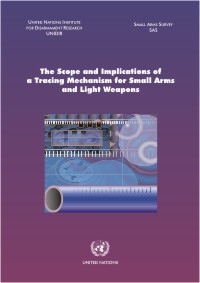Effective tracing of all small arms and light weapons (SALW) requires adequate marking and record keeping, along with international cooperation which enables relevant authorities to trace sources, supply routes and diversion points of illicit weapons in a timely and reliable manner.
Most SALW are marked during manufacture. However, marking practices vary widely from country to country. Such divergences hamper the identification of weapons recovered outside their country of manufacture. In addition, the adequate marking of individual SALW needs to be supported by adequate record keeping if it is to serve a useful purpose. The extent to which records are accessible, the length of time they are held, and their accuracy are key issues in this regard.
Tracing typically transpires in relation to two types of contexts, each of which presents special challenges. Most commonly, tracing is carried out for law enforcement purposes. In such cases, tracing needs to be effected in a reliable and timely manner. Here, access to computerized records, some degree of centralization, and the gathering and sharing of data extrinsic to the weapon itself (i.e., recovery location, possessor, etc.), are essential.
Tracing may also be carried out to investigate, prevent, or disrupt losses of SALW from military and other official stocks as well as their illicit trafficking. Tracing for these purposes involves particular complexities including longer, more complex weapons supply lines, and the involvement of customs services, military police and intelligence services. Here, national military marking and record keeping, along with access to an accurate reading of these, are particularly important.
Produced jointly by UNIDIR and the Small Arms Survey, The Scope and Implications of a Tracing Mechanism for Small Arms and Light Weapons examines the different aspects of SALW tracing and marking practices and international legal instruments currently in place. The volume argues that existing marking, record keeping and tracing cooperation need to be substantially improved in order to facilitate more effective tracing. An international instrument building on existing norms and standards, including those contained in regional agreements, could play an important role in this regard.
Citation: Owen Greene et al. (2003). "The Scope and Implications of a Tracing Mechanism for Small Arms and Light Weapons", UNIDIR, Geneva.
